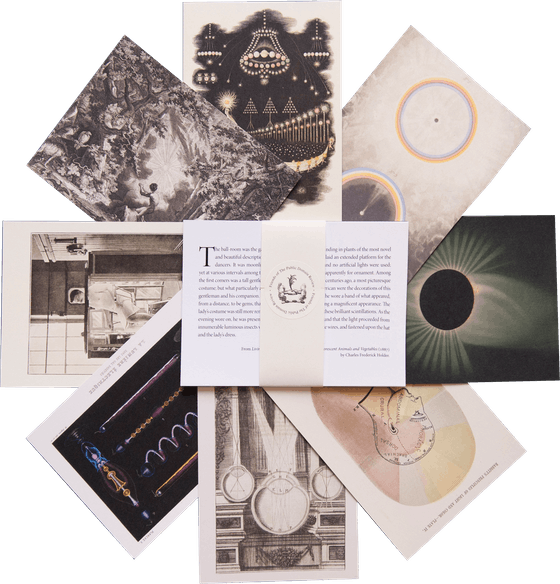
EssaysCulture & History

Art in Art: Cabinets of Curiosity and the Rise of the Gallery Painting
In the 17th century, emanating from Antwerp, a new genre of artwork came on the scene: paintings of paintings, works populated by a lush array of meta-images. From its origins in picturing private curiosity cabinets to its later use in documenting increasingly public collections, Thea Applebaum Licht charts the course of this alluring aesthetic tradition. more

Roma Lister, Aradia, and the Speculative Origins of a Witchcraft Revival
In 1899, Charles Godfrey Leland published Aradia, “the gospel of the witches”, containing a goddess-orientated creation and saviour narrative, purported to descend from an ancient, hermetic tradition of witchcraft in Italy. A. D. Manns explores this text via an enchanting conjecture: that the writer, medium, and witch Roma Lister played a pivotal role in the formation of both Aradia and, therefore, a new form of paganism called Wicca. more

The Adventures and Experiences of the First Slovak Novel
Partially banned upon publication and translated into English for the first time this year, René, or: A Young Man’s Adventures and Experiences (1783–85) found new readers in the communist era thanks to its critiques of feudalism, capitalism, and the Catholic Church. Dobrota Pucherová introduces us to this hybrid work, which mixes the bildungsroman with the philosophical novel, the romance, the adventure story, the travelogue, the history book, and the orientalist fantasy. more

“You Think Me a Bold Cheat”: Mary Carleton, Counterfeit Princess
Accused of posing as foreign royalty to lure her young suitor into a bigamous marriage, Mary Carleton was the subject of dozens of pamphlets and broadsides published in the mid-17th century, including by Carleton herself. Investigating the fraudster’s life, Laura Kolb finds a self-fashioning figure who both influenced the emergence of the English novel and serves as a strange precursor to our modern-day fascination with conwomen and counterfeits, like the heiress manqué Anna Delvey. more

Splitting Hairs: Chinese Immigrants, the Queue, and the Boundaries of Political Citizenship
As Chinese immigration to California accelerated across the 19th century, the hairstyle known as the queue — a long, braided pony tail — became the subject of white Americans’ fascination, disgust, and legal regulation. Sarah Gold McBride explores why hair served as an index of political subjecthood, and how the queue exposed cracks in American norms regarding gender, economy, and citizenship. more

Dancing Naked on the Head of a Pin: The Early History of Microphotography
In 1853, John Benjamin Dancer achieved a feat of seemingly impossible scale: he shrunk an image to the size of a sharpened pencil tip. Anika Burgess explores the invention of microphotography and its influence on erotic paraphernalia and military communications. more

Imagining an Idle Countess: George Wightwick’s The Palace of Architecture
In 1840, British architect George Wightwick published a world history of architecture in the Romantic mode, inviting readers to enter a vast garden where Buddhist iconography rubs shoulders with Greek temples and Egyptian pyramids gaze upon Gothic cathedrals. His intended audience? Idle women. Matthew Mullane revisits this visionary but ultimately unpopular text, revealing the legacy of attempts to gatekeep the realms of imagination and fantasy pertaining to the built environment. more

The Old, Old, Very Old Man: Thomas Parr and the Longevity Trade
As the story goes, Old Tom Parr was relatively healthy for being 152 until a visit to noxious, polluted London in 1635 cut his long life short. Katherine Harvey investigates the early modern claims surrounding this supercentarian and the fraudulent longevity business that became his namesake in the 19th century. more

As Bright as a Feather: Ostriches, Home Dyeing, and the Global Plume Trade
In the 19th century, dyed ostrich feathers were haute couture, adorning the hats and boas of fashionistas on both sides of the Atlantic. Whitney Rakich examines the far-reaching ostrich industry through a peculiar do-it-yourself-style book: Alexander Paul’s The Practical Ostrich Feather Dyer (1888), a text interleaved with richly colored specimens. more

“I Am Making the World My Confessor”: Mary MacLane, the Wild Woman from Butte
In 1902, a woman named Mary MacLane from Butte, Montana, became an international sensation after publishing a scandalous journal recording life at the age of 19. Rereading this often-forgotten debut, Hunter Dukes finds a voice that hungers for worldly experience, brims with bisexual longing, and rages against the injustices of youth. more

Jack London, Jack Johnson, and the Fight of the Century
Held in Jim Crow–era Nevada on the 4th of July, the 1910 World Heavyweight Championship was slated to be a fight to remember. Moonlighting as a boxing journalist, novelist Jack London cheered on Jim Jeffries — ringside and on the page — as the “Great White Hope", a contender to take back the title from Jack Johnson, the first Black heavyweight champion. Andrew Rihn examines the contradictions of London’s racial rhetoric, which is more complex and convoluted than it may initially appear. more

A Princely Ploy: Inside the Ruse of a French-Armenian Scammer
After proclaiming himself the direct descendant of a 12th-century Crusader king, the Armenian priest and educator Ambroise Calfa hit upon an ignoble scheme: grant knighthood to anyone willing to pay. Jennifer Manoukian recovers the cunning exploits of this forgotten 19th-century conman, whose initially honorable intentions quickly escalated into all-out fraud. more

The Emperor’s New Clothes: Fashion, Politics, and Identity in Mughal South Asia
The Mughal emperors in India faced a sartorial quandary: continue wearing their traditional Central Asian attire, or adopt the lighter cotton clothing of this warmer clime? Simran Agarwal considers the cultural, political, and theological implications of embracing Indic fashion, arguing that — by donning the clothing of their subjects — the Mughal emperors fashioned themselves anew. more

The Cat’s Meat Man: Feeding Felines in Victorian London
As cats evolved from feral ratters into beloved Victorian companions, a nascent pet-food economy arose on the carts of so-called “cat’s meat men”. Kathryn Hughes explores the life and times of these itinerant offal vendors, their intersection with a victim of Jack the Ripper, and a feast held in the meat men’s honor, chaired by none other than Louis Wain. more

Designing the Sublime: Boullée and Ledoux’s Architectural Revolution
As dissatisfaction with the old regime fermented into revolutionary upheaval in late-eighteenth century France, two architects cast off the decorative excesses of the Baroque and Rococo styles and sought out bold, new geometries. Hugh Aldersey-Williams tours the sublime and mostly unrealized designs of Étienne-Louis Boullée and Claude-Nicolas Ledoux, discovering utopian ideals crafted in cubes, spheres, and pyramids. more

The Color of Memory: Albert Kahn’s Archives of the Planet
By the time of Albert Kahn’s death in 1940, the French banker and philanthropist had amassed a collection of more than 72,000 autochrome photographs. Grace Linden explores the Archives de la Planète — his sprawling, global project to document and preserve the fast-changing world — and uncovers a latent nostalgia in the hyperreal hues of early color photography. more

“Here I Gather All the Friends”: Machiavelli and the Emergence of the Private Study
Reading is a form of necromancy, a way to summon and commune once again with the dead, but in what ersatz temple should such a ritual take place? Andrew Hui tracks the rise of the private study by revisiting the bibliographic imaginations of Machiavelli, Montaigne, and W. E. B. Du Bois, and finds a space where words mediate the world and the self. more

Talking Lightly About Serious Things: Henri Rochefort and the Origins of French Populism
A man who “believed in nothing, not even himself”, Henri Rochefort is now a minor footnote in the annals of modern journalism. However, at the height of his notoriety, in the late 1860s and early 1870s, his writings, political activities, imprisonments, and escapes were the stuff of newspaper gossip around the world. How did a self-described “errant journalist and literary poacher” rise to power on the wings of sarcasm and ridicule to reshape France’s political landscape? Vlad Solomon explores the life and times of this populist forerunner. more

Scenes of Reading on the Early Portrait Postcard
When picture postcards began circulating with a frenzy across the United States and Europe at the turn of the twentieth century, a certain motif proved popular: photographs of people posed with books. Melina Moe and Victoria Nebolsin explore this paradoxical sign of interiority and find a class of image that traverses the poles of absorption and theatricality. more

Sensitive Material: Wordsworth Donisthorpe, Blackmail, and the First Motion Pictures
The story of early cinema may have been different had Wordsworth Donisthorpe been better at blackmail. Irfan Shah goes digging in the archives to recover the details of this forgotten polymath — political individualist, chess reformer, inventor of a peculiar kind of film camera — and finds a fierce debate about the history of English wool combing improbably implicated in the rise of motion pictures. more

From Fire Hazards to Family Trees: The Sanborn Fire Insurance Maps
Created for US insurance firms during a period of devastating fires across the 19th and 20th centuries, the Sanborn maps blaze with detail — shops, homes, churches, brothels, and opium dens were equally noted by the company’s cartographers. Tobiah Black explores the history and afterlife of these maps, which have been reclaimed by historians and genealogists seeking proof of the vanished past. more

“You Are My Friend”: Early Androids and Artificial Speech
Centuries before audio deepfakes and text-to-speech software, inventors in the eighteenth century constructed androids with swelling lungs, flexible lips, and moving tongues to simulate human speech. Jessica Riskin explores the history of such talking heads, from their origins in musical automata to inventors’ quixotic attempts to make machines pronounce words, converse, and declare their love. more

Windows Onto History: The Defenestrations of Prague (1419–1997)
Throwing people out of windows (or defenestrating them, as the Latin has it) is an act imbued with longstanding political significance in Prague. From the Hussite revolt in the late Middle Ages through the Thirty Years’ War to modern instances of “autodefenestration”, Thom Sliwowski finds a national shibboleth imbued with ritual efficacy. more

Little Boney: James Gillray and Napoleon’s Fragile Masculinity
Of all the caricatures of Napoleon Bonaparte, representations of the French emperor as a miniscule megalomaniac continue to haunt the historical imagination to an unparalleled degree. Peter W. Walker searches for the origins of “Little Boney” in the early 19th-century caricatures of James Gillray, the English illustrator who took Napoleon down a peg by diminishing his reputation and scale to the point of absurdity. more


